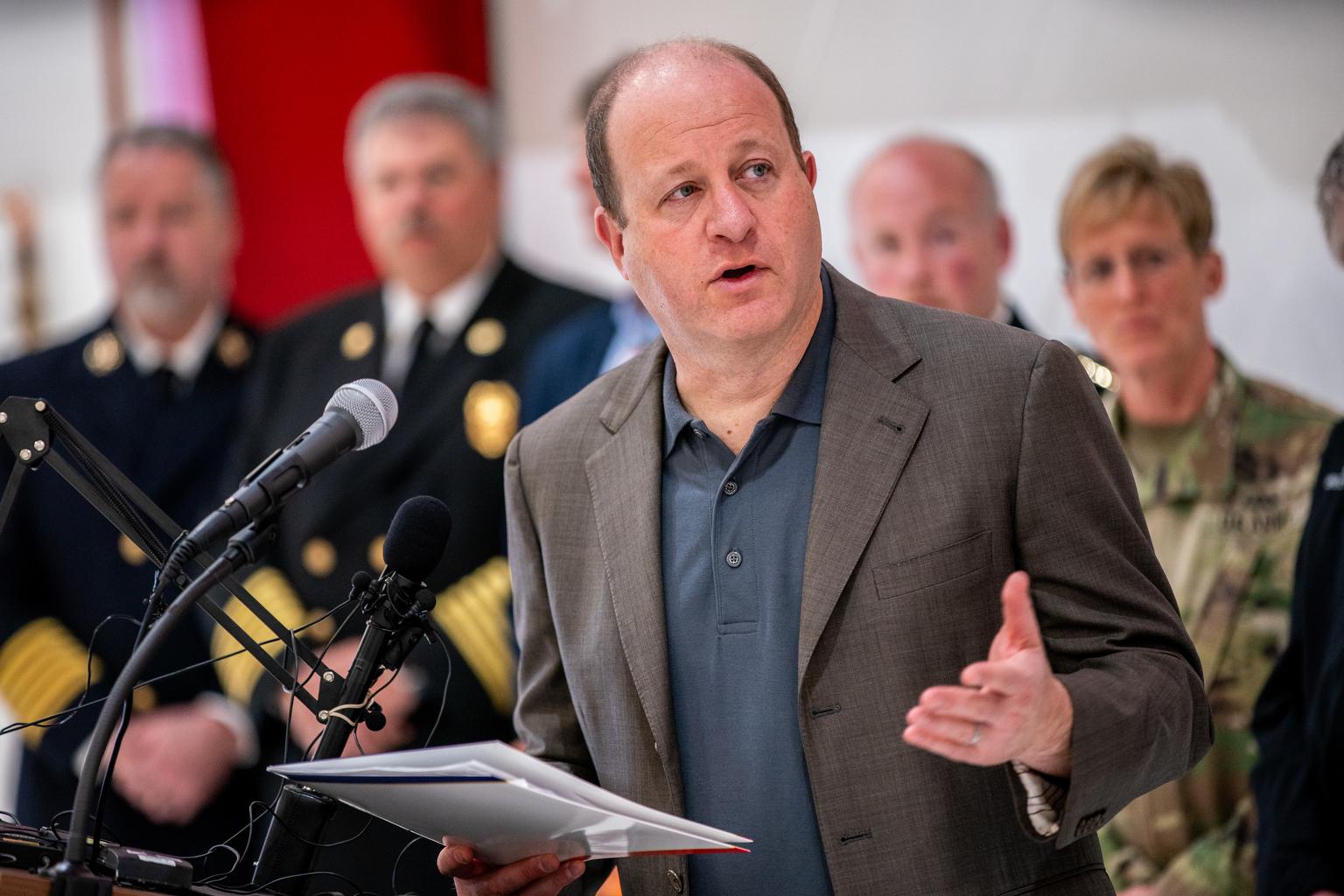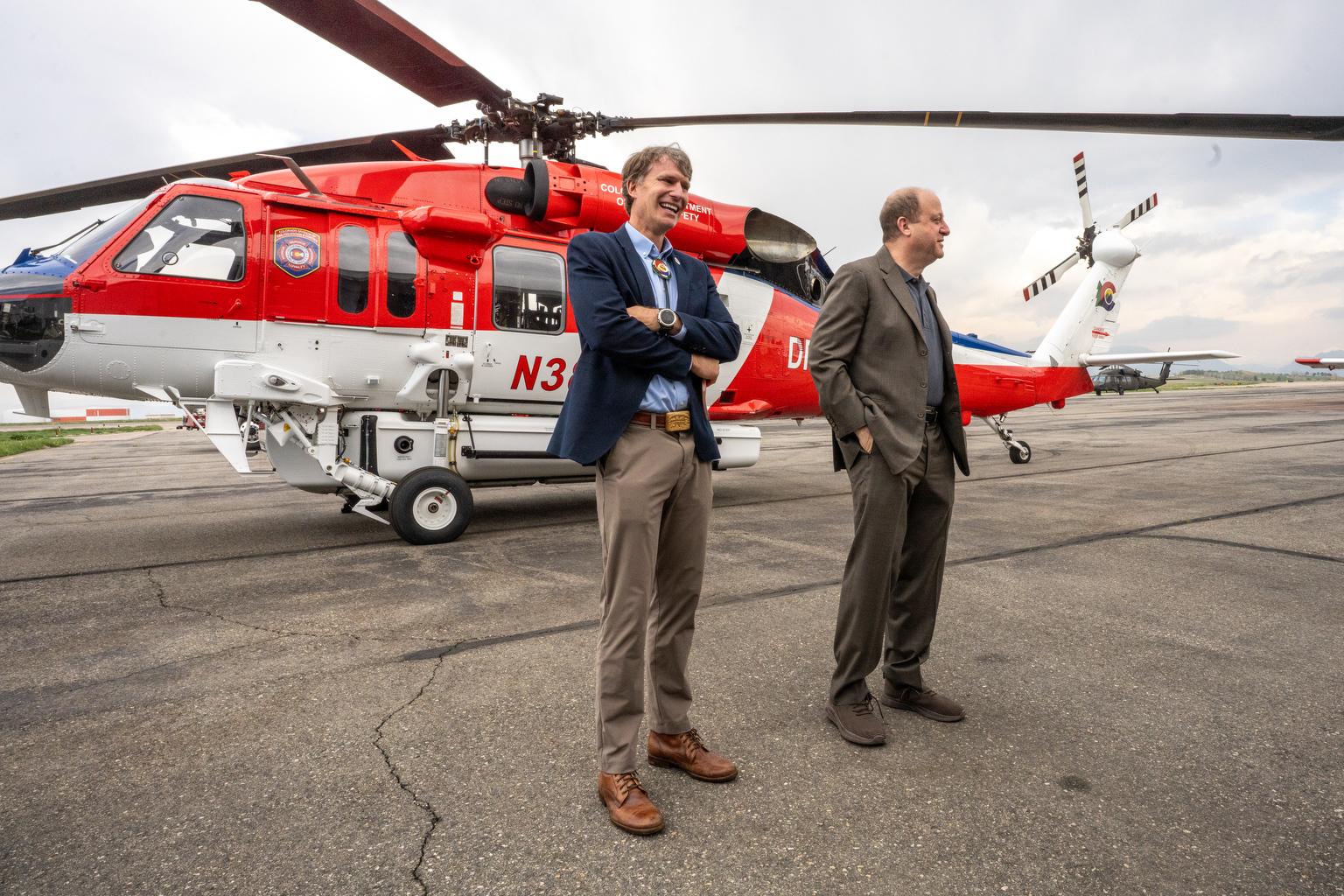
The levee that protects much of downtown Pueblo from potential floodwaters in the Arkansas River is about to get a major facelift. After levees failed in Louisiana during Hurricane Katrina in 2005, FEMA made a push for levee certification. And for Pueblo’s aging Arkansas River levee this means an estimated 15 million dollar repair project and the destruction of its famous mural. The alternative is downtown properties would have to buy flood insurance. The process has brought to the forefront structural deficiencies.
A paved walking and biking path meanders alongside the river across from the massive 2.8 mile long levee. The structure was built following the deadly 1921 flood that killed hundreds and devastated downtown Pueblo.
Rick Kidd is the administrator for the district that oversees the levee. He points to higher ground and explains that engineers back then chose to actually re-route the river to take advantage of the natural terrain.
“Their feeling was that over here was the best,” says Kidd. Kidd says engineers thought about trying to maintain it where the river went through the middle of town before, “but then you’d have an embankment on both sides of it. If it was moved over here you’d have the bluff side that would serve as one side so then you’d only have one embankment.”
Kidd says the levee embankment was built up from the silt and other soils left behind by the flood, and that’s part of what’s causing the current problems.
“There was no compactive effort put in it.”
There’s also the damage to the concrete facing on the levee. Kidd says the concrete is ten inches thick with reinforcing steel in it and it was all mixed and worked by hand.

“They did one of these panels at time which I believe is 12.5 feet wide, and they would take a panel up and screed it from the bottom up and that’s a 1.5:1 slope. So it was hard work for the guys doing that,” says Kidd. “It was extremely hard work, very labor intensive.”
Kidd says he respects the work they did back then but adds, “Concrete’s like everything else—it wears, and it’s had 90 years of wear on it."
“We’ve done an evaluation of the concrete structure and found it to be in severe distress with a lot of settling, cracking and failures going on,” says Kim Kock, the consulting engineer for the levee repair project. “Also we’ve had geo-technical test holes drilled through the top of the levee and found a lot of varying materials of varying compaction. There’s just a lot of concern about the stability of the levee right now.”
Kock says there are many unknowns under the concrete, including areas where the soil embankment has disappeared over time, leaving deep voids. Work will begin with a test section where the north end of the levee begins on Wild Horse Creek.
“By taking this concrete off and getting into this first initial phase, we’ll be able to get a good handle on all the different materials we’re going to hit and what we need to do as far as remediation,” says Kock.
Along with removing the existing concrete and resurfacing it, the work involves lowering the levee by about 13 feet.
“We looked at all the floodplain mapping that had been prepared by the consultant through FEMA,” Kock says, “and found that because of the Pueblo reservoir, we don't need the full height of the levee anymore, so we are able to lower the top of it.”
Removing the top of the levee will also let the contractors create a wider work platform and better access.

“One of the issues we’ve got is access to the levee is extremely constrained because of the river on one side and the railroad yard on the other,” Kock says, standing beneath the 11th Street Bridge. “Total headroom in this bridge is about 8 foot so to get concrete trucks and semis hauling dirt in and out we’re going to have make some changes here to be able to get those vehicles in and out.”
The conservancy district is working with the city to come up with ideas to eventually utilize the wider platform on top of the levee as a pedestrian walkway. They’re also working with the local arts community to find ways to preserve the murals painted on the levee’s concrete walls. It’s listed by Guinness World Records as the largest outdoor mural in the world. One idea has been to save portions of the mural and move them to parks.
Kock says they’ve requested estimates to do this.
“A 10 x 10 piece of 10 inch thick concrete weighs 10 to 15 tons. That is heavy and it’s hard to move. This levee is 40 feet high, and some of these murals are 40 foot high by 70-80 foot long.”
The project also calls for ways to make it easier for artists to access the levee to paint murals on the new concrete surface by providing tie off locations and toe holds.
Construction work is expected to begin in November and will occur during low water in the winter. It’s expected to take three or four years. During this time FEMA will not require flood insurance for downtown businesses. A FEMA representative was unavailable for comment.









